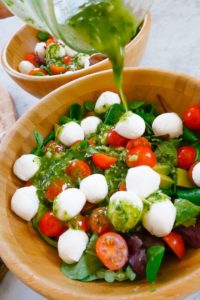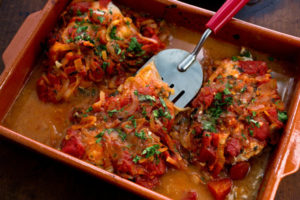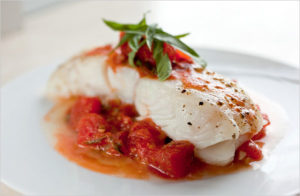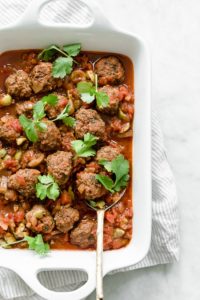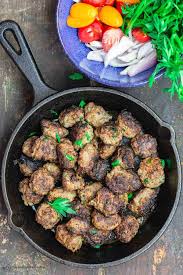
Morocco has long been on my list of must-visit countries. Twisty alleys, markets crowded with vendors, scampering trained monkeys… I need to see it all. The country sits in the northwestern corner of Africa, and the influence of Arab and Moorish invaders can be tasted in traditional Moroccan cuisine. Lucky us! Spices like aromatic cinnamon, cumin, and paprika are prevalent, along with herbs like mint and parsley. These meatballs are seasoned with essential Moroccan spices, then simmered in tomatoes that cloak them in a sauce that tastes like mystery and adventure.
INGREDIENTS:
MEATBALLS:
1/2 cup fresh parsley leaves, minced (about 2 tablespoons)
1 tablespoon paprika
2 teaspoons ground cumin
1 teaspoon Himalayan salt
1/4 teaspoon ground black pepper
1 kgs fat free minced beef
SAUCE:
1 tablespoon coconut oil
2 medium onions, diced (about 2 cups)
2 garlic cloves, minced (about 2 teaspoons)
2 teaspoons paprika
2 teaspoons ground cumin
1 teaspoon salt
1/4 teaspoon ground black pepper
2 medium tomatoes, diced (about 2 cups)
1 1/2 cups water
2/3 cup low sodium tomato paste
1/2 cup fresh parsley leaves, minced (about 2 tablespoons)
garnish: 1/4 cup roasted pistachios, chopped
DIRECTIONS:
1
In a large mixing bowl, combine the parsley, paprika, cumin, salt, and pepper with a fork. With your hands, crumble the lamb into the bowl and knead until all of the ingredients are incorporated.
2
Moisten your hands with water and shake to remove excess. Measure a level tablespoon of lamb and roll into a ball between your palms. Line up the meatballs on a baking sheet until it’s time to put them in the sauce.
3
Heat the oil in a large, deep skillet or pot. Add the onion and sauté until soft, about 5 minutes. Add the garlic, paprika, cumin, salt, and pepper and stir until fragrant, about 30 seconds. Add the tomato paste and stir-fry 1 minute. Add the water, chopped tomatoes, and parsley to the pan and stir to combine.
4
Bring the sauce to a boil, then gently place the meatballs in the skillet, cover, and reduce heat to simmer. Cook 40 minutes covered, then remove the lid and cook an additional 20 minutes, until the sauce has thickened. Sprinkle each serving with a few teaspoons of chopped pistachios. Bonus points if you serve them on top of Oven-Roasted Cauliflower Rice.

